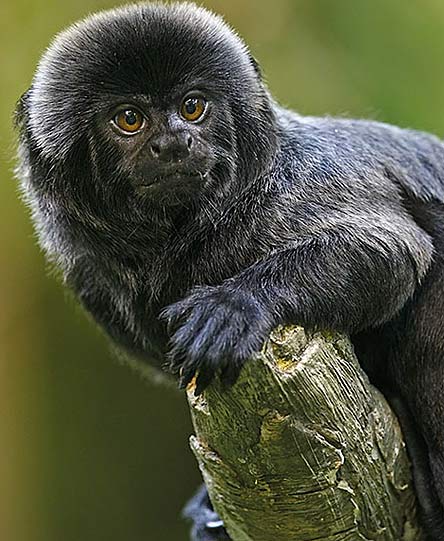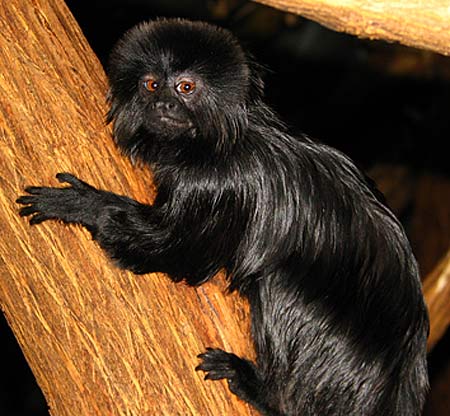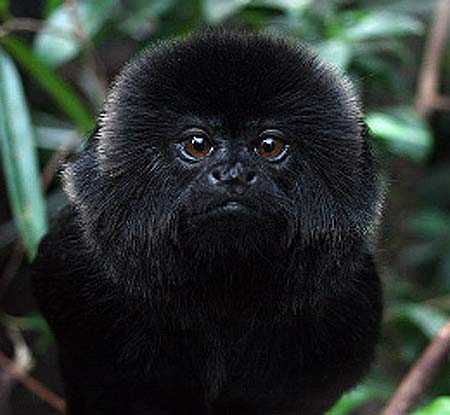Geoldi’s Marmoset – Little Black Monkey Hiding In the Amazon

Named for the man who discovered the species, Emil August Goeldi, Goeldi’s marmoset (sometimes referred to as Goeldi’s monkey or a callimico) is a small creature that is native to the upper Amazon Basin regions of Bolivia, Brazil, Colombia, Ecuador and Peru. A new world monkey, Goeldi’s marmosets are usually black or dark-brown in color, with occasional red, white, or silver highlights on the head and tail. They have lengths between 8 and 9 inches (20 and 23 centimeters), and tails of about 10 to 12 inches (25-30 centimeters).

Considered vulnerable for extinction, this monkey is quite rare, and is often unseen because of its habit of foraging in dense undergrowth. This also leads to vast separations between groups, as only a certain number can inhabit a suitable environment, and these areas may be spread far apart. Within these separate colonies, the marmosets live in groups of about 6, and communicate by high-pitched calls. They’re also known to co-habitate with tamarins because of the tamarins abilities to see colors better than the Goeldi’s marmosets.

The marmoset’s diet consists of fruit, insects, spiders, butterflies, lizards, frog, snakes, and when necessary, fungi; actually, they are the only tropical primates to utilize this food source.
Goeldi’s Marmosets give birth twice a year on average, with gestation periods that last between 140 and 180 days, and yielding only one baby at a time. The baby is under the mother’s care for the first 2-3 weeks, at which point the father takes over care-giving duties. They live for about 10 years on average.

